Fashion is a dynamic and ever-evolving landscape where trends come and go, often making a dramatic impact on the way people dress and express themselves. Looking back at past decades, we can see how fashion trends have shaped cultural identities and influenced style across generations. This guide explores some of the most iconic fashion trends from each decade, illustrating how they’ve left their mark on fashion history.
1920s: The Roaring Twenties
Women: The Flapper Dress
- Description: The flapper dress was characterized by its loose, straight fit that fell just below the knee. It often featured embellishments such as beads and fringe, which added movement and sparkle.
- Impact: Symbolizing the liberation of women, the flapper dress was a departure from the restrictive corsets of previous decades. It embraced a more relaxed and youthful silhouette, which was a radical shift in fashion norms.
Men: The Three-Piece Suit
- Description: The three-piece suit, consisting of a jacket, trousers, and a vest, became a staple in men’s fashion. It was often made from wool and featured a slim, tailored fit.
- Impact: This suit style represented sophistication and modernity, setting a new standard for formal wear that emphasized a clean, structured look.
1930s: The Elegance of the Thirties
Women: Bias-Cut Gowns
- Description: Bias-cut gowns, designed by couturiers like Madeleine Vionnet, were cut on the diagonal grain of the fabric, which allowed the material to drape elegantly and follow the body’s curves.
- Impact: This technique gave gowns a fluid, graceful quality and contributed to a more feminine and body-conscious silhouette, marking a contrast to the looser styles of the previous decade.
Men: The Double-Breasted Suit
- Description: The double-breasted suit featured overlapping front panels with two rows of buttons, often paired with wide lapels.
- Impact: It provided a more formal and authoritative look, enhancing the shoulder line and creating a powerful, commanding presence.
1940s: Wartime and Post-War Fashion
Women: The Utility Dress
- Description: During World War II, utility dresses were designed for practicality and simplicity due to fabric rationing. They often had features like large pockets and sturdy fabrics.
- Impact: The utility dress represented a shift towards functionality in women’s fashion, reflecting the wartime need for practicality while still maintaining a sense of style.
Men: The Casual Sport Jacket
- Description: The casual sport jacket emerged as a less formal alternative to the traditional suit jacket, often featuring patterns like checks or tweeds.
- Impact: It provided men with a versatile option that could be dressed up or down, bridging the gap between formal and casual wear.
1950s: The Golden Age of Glamour
Women: The New Look
- Description: Introduced by Christian Dior, the New Look featured a nipped-in waist, full skirt, and rounded shoulders. It emphasized a dramatic, feminine silhouette.
- Impact: The New Look was a dramatic departure from wartime fashion, celebrating opulence and femininity, and set the stage for post-war fashion’s return to luxury.
Men: The Rebel Look
- Description: Popularized by icons like James Dean, the rebel look included leather jackets, jeans, and t-shirts, embodying a sense of youthful rebellion and nonconformity.
- Impact: This trend symbolized a shift towards casual, youth-oriented fashion and became a defining style for the emerging rock ‘n’ roll culture.
1960s: The Decade of Change
Women: The Mini Skirt
- Description: The mini skirt, designed by Mary Quant, featured a hemline that was well above the knee, offering a bold and youthful aesthetic.
- Impact: It represented the spirit of the ’60s, embracing freedom and liberation, and became a symbol of the feminist movement and youth culture.
Men: The Mod Look
- Description: The Mod look included slim-fit suits, colorful patterns, and stylish accessories like skinny ties and loafers. It was characterized by its emphasis on modernity and sharp dressing.
- Impact: This trend was a hallmark of the mod subculture and represented a shift towards a more sophisticated, yet playful, approach to men’s fashion.
1970s: The Era of Individuality
Women: The Bohemian Style
- Description: The bohemian style featured flowing fabrics, earthy tones, and eclectic patterns. It was heavily influenced by the countercultural movements of the ’70s.
- Impact: It embraced a laid-back, free-spirited approach to fashion, reflecting the era’s values of individuality and freedom.
Men: The Disco Look
- Description: The disco look included shiny fabrics, flared pants, and bold prints, popularized by the dance culture of the late ’70s.
- Impact: It represented the exuberance of the disco era and was characterized by its emphasis on glamour and fun.
1980s: The Power Decade
Women: Shoulder Pads and Power Suits
- Description: Power suits featured broad shoulder pads and tailored cuts, designed to convey authority and strength in the workplace.
- Impact: This trend was emblematic of the ’80s corporate culture, highlighting women’s increasing presence in professional roles and their demand for equal status.
Men: Preppy Style
- Description: The preppy style included polo shirts, khakis, and cardigans, often associated with collegiate and upper-class fashion.
- Impact: It offered a clean, classic look that became widely popular and was associated with affluence and a polished appearance.
1990s: The Rise of Minimalism
Women: Grunge Fashion
- Description: Grunge fashion included flannel shirts, ripped jeans, and combat boots, popularized by bands like Nirvana.
- Impact: It represented a rebellion against the polished styles of the ’80s and embraced a more relaxed, anti-establishment attitude.
Men: The Casual Cool
- Description: The casual cool look featured oversized shirts, baggy jeans, and sportswear-inspired pieces. It was a reflection of a more relaxed approach to style.
- Impact: This trend symbolized the rise of casualwear and street style, which became increasingly influential in mainstream fashion.
2000s: The Age of Fast Fashion
Women: Low-Rise Jeans
- Description: Low-rise jeans, with their waistband sitting below the hips, became a popular trend in the early 2000s.
- Impact: This trend epitomized the fashion of the ’00s, characterized by a focus on casual, trendy, and often body-conscious clothing.
Men: Logo Mania
- Description: Logo mania involved prominently displaying brand logos on clothing and accessories, reflecting a desire for status and brand recognition.
- Impact: It highlighted the growing influence of branding in fashion and the consumer culture of the early 2000s.
2010s: The Digital Revolution
Women: Athleisure
- Description: Athleisure combined athletic wear with everyday clothing, making pieces like yoga pants and sports bras acceptable for casual outings.
- Impact: It reflected a growing emphasis on comfort and practicality in fashion, influenced by the fitness and wellness trends.
Men: Streetwear
- Description: Streetwear included oversized hoodies, graphic tees, and sneakers, often influenced by skate and hip-hop cultures.
- Impact: It represented a shift towards casual, urban fashion and the increasing influence of youth culture on mainstream fashion.
2020s: The Era of Sustainability and Individualism
Women: Sustainable Fashion
- Description: Sustainable fashion focuses on eco-friendly materials, ethical production practices, and minimal waste.
- Impact: It represents a growing awareness of environmental issues and the desire for more responsible fashion consumption.
Men: Gender Fluidity in Fashion
- Description: Gender fluidity in fashion includes clothing that challenges traditional gender norms, such as skirts, makeup, and unisex designs.
- Impact: It reflects a broader acceptance of diverse gender identities and a move towards more inclusive fashion.
Conclusion
Fashion trends from the past decades have shaped the way we dress and express ourselves, reflecting cultural shifts, societal values, and technological advancements. From the glamorous flapper dresses of the 1920s to the rise of sustainable fashion in the 2020s, each decade has left an indelible mark on fashion history. By understanding these iconic trends, we can appreciate how past styles continue to influence contemporary fashion and how they pave the way for future innovations.



